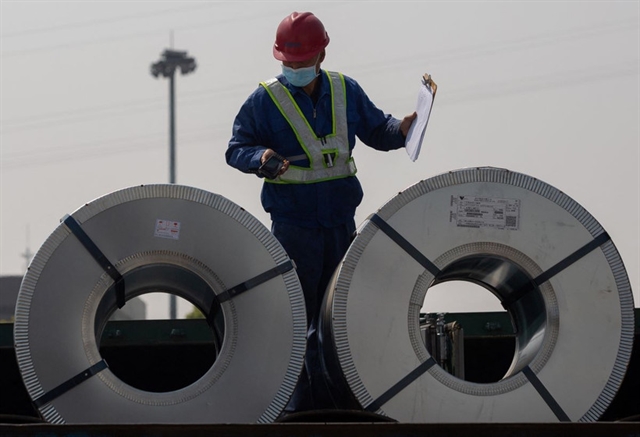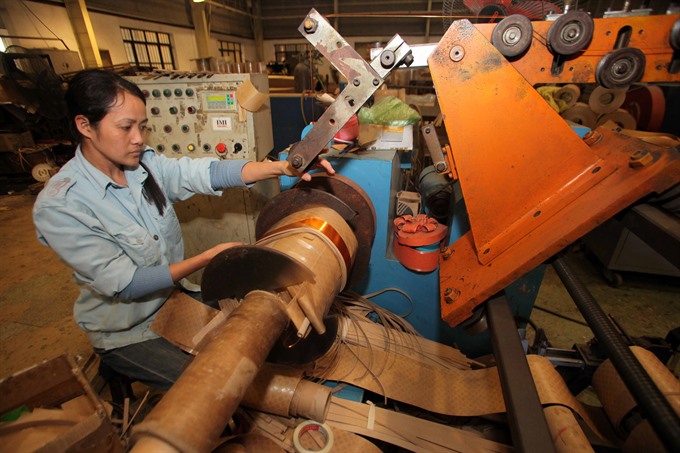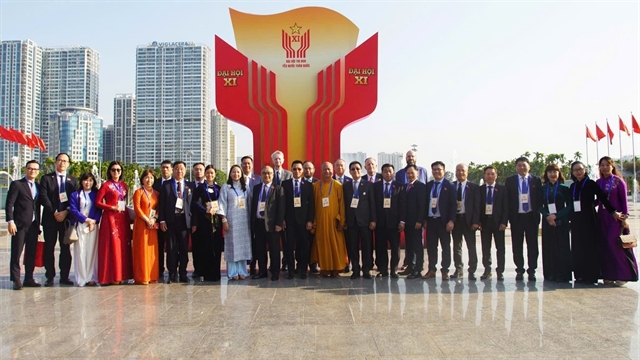 Economy
Economy

The annual growth goal of 6.7 per cent is likely to remain beyond reach despite an improved economic performance in the second half of the year, says Nguyễn Đức Thành, Director of the Vietnam Institute for Economic and Policy Research (VEPR).
 |
| Electrical transformers are made at the HANAKA factory in Bắc Ninh Province. — VNA Photo Trần Việt |
HÀ NỘI — The annual growth goal of 6.7 per cent is likely to remain beyond reach despite an improved economic performance in the second half of the year, says Nguyễn Đức Thành, Director of the Việt Nam Institute for Economic and Policy Research (VEPR).
He was speaking at a conference held on Monday to release his institute’s second quarter report.
The institute sees a significant year-on-year improvement in growth to reach 6.17 per cent (Q2 growth in 2016 was 5.78 per cent).
It attributes this to considerable improvement in the agriculture sector after a sluggish year and to the service sector reaching a five-year peak.
Overall, the business sector has been stable, with the Purchasing Managers’ Index (PMI) at 52.5 points, having bounced back from March’s 51.6 points.
The Việt Nam Economic Performance Index (VEPI) also increased moderately to 6.0 per cent in the second quarter, higher than that of 2016 at 5.35 per cent.
Meanwhile, the industrial sector and construction industry rose significantly, with year-on-year growth of 10.5 per cent and 8.5 per cent respectively.
The VEPR report said the drop in industrial growth earlier this year was temporary, not reflecting the economy’s long term trends.
Thành said all economic sectors need to adjust their growth strategies, now that it is clear merely increasing capital and disbursement for public investment projects would not be so effective.
The report says the increase in the number and average registered capital of newly established enterprise has been partly offset by a rise in enterprises temporarily ceasing business operations and a decline in the number of newly employed workers as well as the number of workers in the industrial sector.
This highlights the country’s (excessive) dependence on several large foreign direct investment companies, it adds.
Speaking at the conference, Lê Đăng Doanh, former head of the Central Institute for Economic Management (CIEM), also argued that the country’s rapid growth depends on the implementation of policy changes for both state-owned enterprises and private firms.
Spurt in trade
International trade in the second quarter saw robust growth with exports and imports rising year on year by 24.5 and 26.8 per cent, the highest increase in more than five years.
Increased export turnover boosted the trade balance by 24.5 per cent year on year in the second quarter to US$97.8 billion in the first six months of 2017.
Inflation growth decreased significantly in the second quarter. Dwindling food prices due to a big surplus in pork supply and fuel price increases curbed the impacts of price stabilisation.
The Consumer Price Index in June rose by a mere 2.54 per cent compared to June 2016 and 0.2 per cent over December 2016. Consumption markedly improved in terms of both value and volume in the second quarter with year on year growth of 10.1 per cent and 8.4 per cent , respectively.
National budget deficit also reduced significantly in the past six months, reaching VNĐ32.5 trillion ($1.44 billion) compared to VNĐ89.2 trillion ($3.8 billion) in 2016.
The report attributes this growth to the delayed disbursement of public investment, but also points out that current expenditures, repayment of principal and interest payments continued to jump, putting a severe strain on the budget.
The credit-deposit gap has widened with a surge in the former and a drop in the latter. Nevertheless, delayed disbursement of public investment increased the amount of deposits with the Việt Nam State Treasury in commercial banks, lifting liquidity pressures and stabilising interest rates, while the gold and foreign exchange markets remained stable despite fluctuations in the world market.
Investment recovered slightly, mostly thanks to foreign investors. Newly registered capital rose to $8.92 billion in the second quarter with several new, large scale projects.
Cấn Văn Lực , director of the BIDV Training School, said that the need economy restructuring was real and urgent for both short and long term goals.
The real estate market, meanwhile, showed a drop in sales as well as ownership transfers of new apartments compared to the same time last year, with such activity concentrated mainly in the mid- and low-end segments. — VNS




